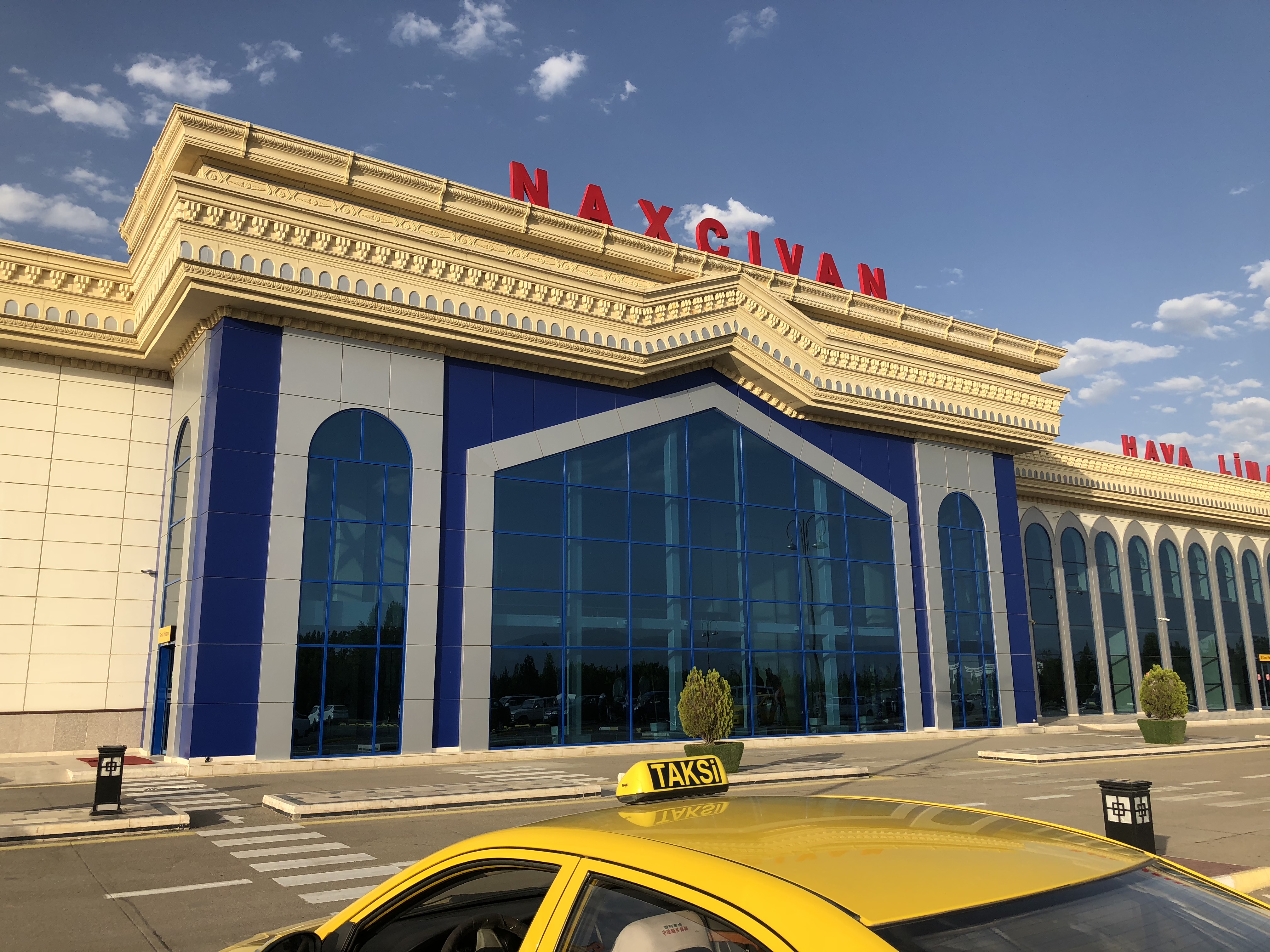
Where is Naxçıvan and how do you get there?
Naxçıvan is small enclave of Azerbaijan, roughly the size of the state of Delaware, that is completely separated from Azerbaijan proper. Naxçıvan shares land borders with Armenia, Turkey and Iran, although all of the Armenian borders are completely sealed; the Yerevan-Baku train line, once popular in Soviet times, no longer runs through Naxçıvan City.
While it is possible to enter by land from Turkey or Iran, doing so will most likely require a double-entry visa, so unless you’ve come fully prepared with all the correct paperwork, the easiest way to arrive is by air. Azerbaijan Airlines (AZAL) operates multiple daily flights between Baku and Naxçıvan, making it feasible to visit Naxçıvan’s capital city in one day. I do regret not spending more time there, but it is possible to get a nice taste of the city by departing from Baku on the earliest morning flight and returning on the last night flight.
Before June 2018, booking a ticket to Naxçıvan with AZAL was complicated. A non-Azerbaijani citizen was not able to purchase a ticket over the phone or online, but rather only in person at the AZAL office in Baku, making it nearly impossible to schedule a journey in advance of a trip to Azerbaijan. I was set to jump through this hoop for my planned visit in July 2018, when I received word that for the first time ever, tickets would be available directly through the AZAL website. This makes adding Naxçıvan to any Azerbaijan itinerary so much easier.
All Naxçıvan-bound flights depart from Terminal 2 of Baku’s Heydər Əliyev International Airport; I was stopped twice by airport security in an attempt to redirect me to Terminal 1, from which a majority of international flights depart. I guess it was just too much of an unusual sight to see an American tourist lining up for a trip to Naxçıvan that they assumed I was lost and wandered over to the wrong terminal! When I showed one of the guards my ticket, he called over two of his follow guards who were born in Naxçıvan and they shook my hand, seemingly excited I was visiting their home city- a common theme that developed throughout the day.
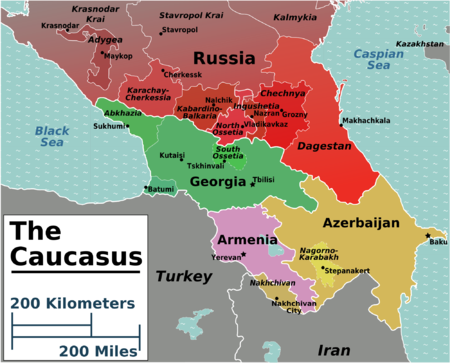
What is the best way to get around Naxçıvan (City)?
The capital is easy to explore on foot, but public transportation between the airport and the city was difficult to figure out. Luckily taxis are plentiful and cheap. My taxi driver was surprised (and excited) to have a New Yorker in his cab and even volunteered to be my personal driver for the day. If I had wanted to venture out of the capital I would definitely have taken him up on his offer, but instead, I had him drop me off downtown and we agreed on a pick-up time later in the evening so I could catch my late flight to Baku. If you are staying in Naxçıvan for longer than a day and plan on checking out destinations beyond Naxçıvan City, a personal driver is probably much easier to manage than trying to figure out the local bus system.
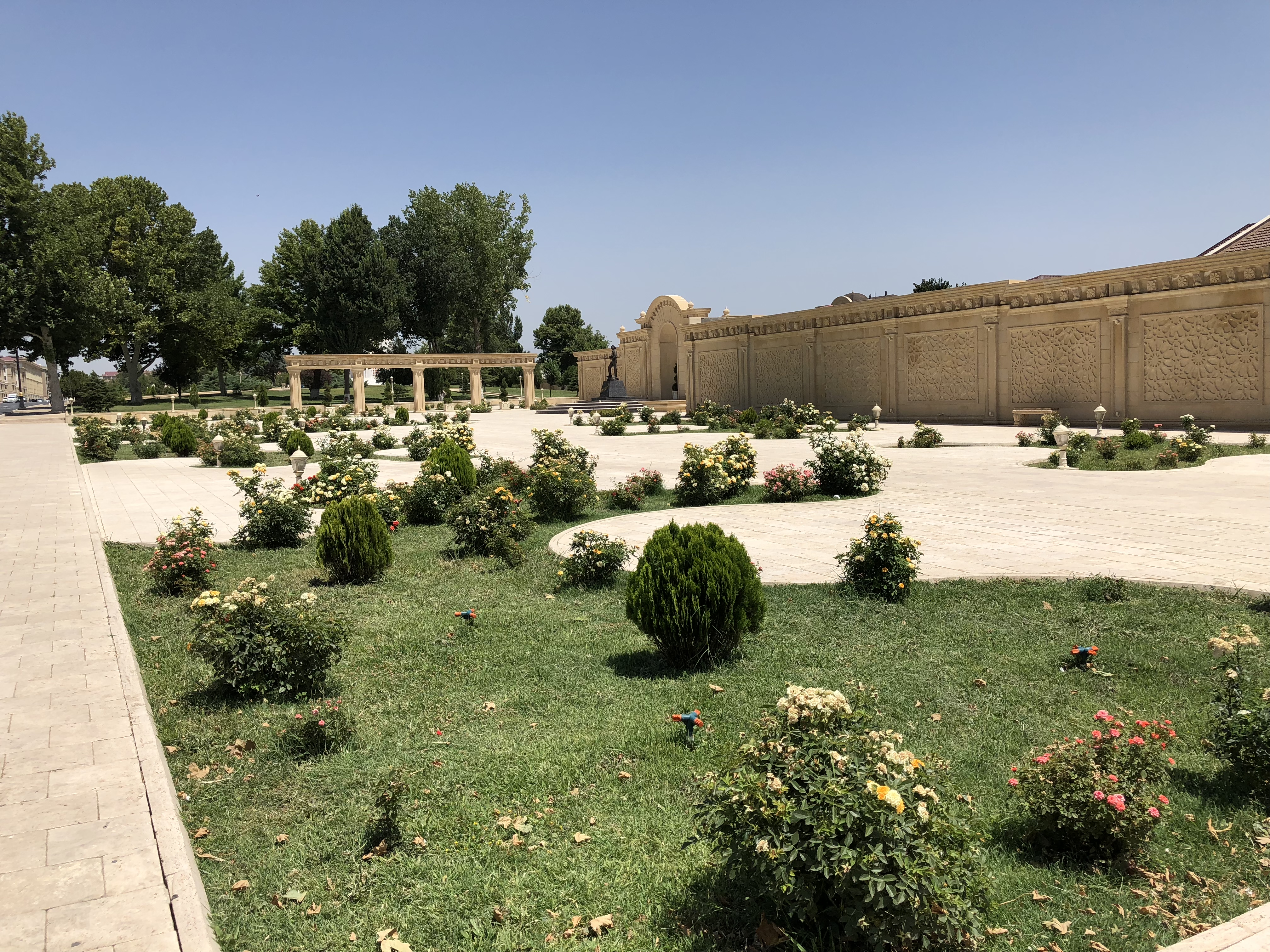
Why isn’t Naxçıvan City listed as its own “world capital?”
Naxçıvan’s full name is actually Naxçıvan Muxtar Respublikası (Naxçıvan Autonomous Republic), which, as the title suggests, is an autonomous region inside Azerbaijan that has its own elected legislature, but recognizes the President of Azerbaijan as their leader. The Manat is the unit of currency and Azerbaijani is spoken everywhere. Throughout the Caucasus you’ll find several (disputed) autonomous areas, but the only thing difficult about a trip to Naxçıvan is its isolated geographical position; the physical separation has shaped the psyche of Naxçıvan on a cultural, political and economic level. A very inelegant comparison with the United States is our relationship with Puerto Rico: an area separated from mainland America that self-governs, but unlike Puerto Ricans, citizens of Naxçıvan have full voting rights (and are subject to all federal taxation laws).
Archeological relics date Naxçıvan’s earliest history back to the Stone Age; nations and empires have been fighting over the region ever since. Naxçıvan has been part of Azerbaijan, Armenia, the Ottoman Empire, Persian Empire and Soviet Union, just to name a few. Starting in the 1500s, Naxçıvan was a Khanate of the Persian Empire, but was ceded to Russia in an 1828 treaty, making it one of the many pieces of Imperial Russia. Taking advantage of turmoil brought on by the Russian Revolution, Naxçıvan, along with its fellow nation states in the Baltic and Caucasus regions, declared independence from Imperial Russia in 1918. While the Baltic States tasted freedom until 1940, the Bolshevik Army immediately went to war in the Caucasus, capturing Georgia, Armenia and Azerbaijan and placing them under Soviet control by 1920. Naxçıvan was granted its own SSR status, but with the caveat of having “close ties” with the Azerbaijan SSR.
Naxçıvan City was a very strategic hub for the Soviets, being both a major stop on the aforementioned Baku-Yerevan railway, as well as on the Moscow-Tehran line. Ethnically, the population was split fairly evenly between Armenians and Azerbaijanis, but over the course of the 1960’s and 70’s, most of the ethnic Armenians emigrated to the Armenia SSR; by 1979, Armenians accounted for less than 2% of Naxçıvan’s population.
On January 19, 1990, Naxçıvan became the first region in the entire Soviet Union to declare independence, but peace was the last thing in store for this tiny strip of land post-independence. As Azerbaijan and Armenia (and Georgia) broke away from the crumbling USSR the following year, a bitter war broke out between Azerbaijan and Armenia over the Nagorno-Karabakh region, an area with deep historical and cultural ties to both nations. The conflict is still not resolved today, though a tentative ceasefire has been in place since 1994. Because of the tensions in Nagorno-Karabakh, Armenia cut off all railway access to Naxçıvan, which was its only link to the former Soviet Union. Naxçıvan found itself without electricity, food or resources. Two bridges were built on the borders with Turkey and Iran and these two bridges became the only lifelines to the tiny nation.
Naxçivan native Heydər Əliyev was the leader during these years, and in late 1993 when he was elected President of all of Azerbaijan, Naxçivan was inaugurated into the new-independent nation with its current “autonomous region” status.
After the four years of isolation, Naxçıvan needed to rebuild. Nearly every tree had been cut down and used for heat during this period and you’ll notice that most trees in the capital are only 5-10 years old; Böyük bağ park is the notable exception. Organic farming is taking off and the government has almost reached its goal of 100% WiFi coverage. Naxçıvan City has experienced a major construction boom; ancient historical sights are juxtaposed with sleek, modern buildings, making the capital a fascinating destination to explore.

How should you spend a day in Naxçıvan City?
If you only have one day to see Naxçıvan’s capital, you can find what to see and do in Part II of this post!
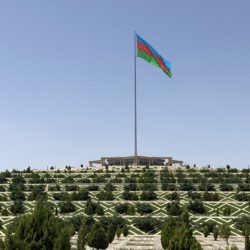
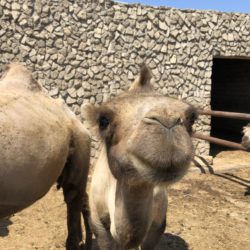
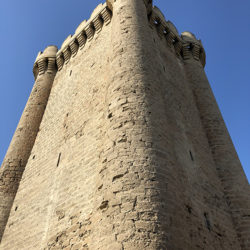
I think yours is the first account of travel to Naxçıvan I’ve read! Well done!
What was the approximate cost of the RT ticket from Baku? Was English widely spoken there? What about Russian? I’d love to make it there whenever I end up hitting Azerbaijan. 🙂